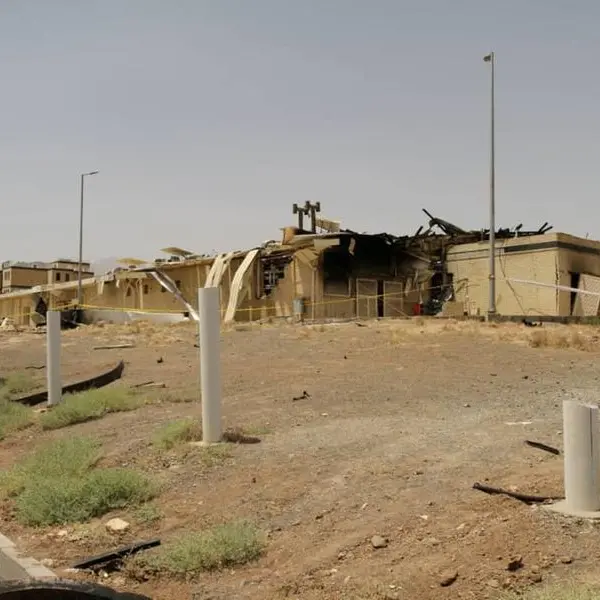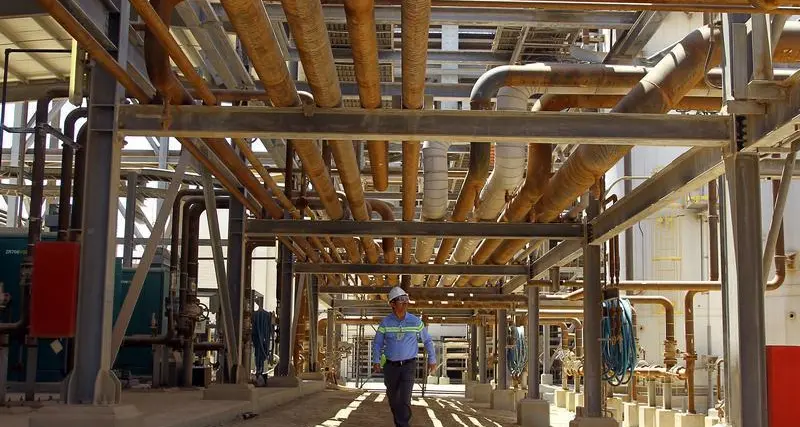ABU DHABI, 7th December, 2016 (WAM)-- The Central Bank of United Arab Emirates, UAE, is working on an ambitious regulatory development programme in line with developments at the international level, where, at the federal level, the apex bank is near to completing a few key legislative enablers, said Saeed Abdulla Al Hamiz, Assistant Governor For Banking Supervision Affairs, Banking Supervision Department at the Central Bank of the UAE, on Wednesday.
These include a new central bank and banking law that reflects a substantial amendment to our existing Central Bank Union Law No. 10 of 1980, that among other things will further enhance Central Banks independence and governance; and better align of our macro-prudential institutional framework our banking sector regulation and supervision with best practices; as well as strengthen safety nets, Al Hamiz said at the opening of the two-day 12th High-Level Meeting for Global Banking Standards and Regulatory and Supervisory Priorities, co-organised by Basel Committee on Banking Supervision, Financial Stability Institute, and the Arab Monetary Fund. The programme also includes a new Public debt law that will form the foundation to develop our domestic debt capital markets. It can provide a new source of funding for the federal and local governments, create a yield curve, and provide banks with the additional options to fulfill compliance with the new liquidity rules. A third ingredient is a newly drafted, but not yet approved Federal investment law, which could further improve prospects for enhancing the foreign direct investment (FDI). The fourth ingredient of the regulatory development programme is a draft of "Netting Law" that will lead to strengthening the stability of financial markets in the country and increase the possibility of credit availability and reduce costs for banks involved in the UAE. The new law is being prepared by the Central Bank of the UAE and the Ministry of Finance in coordination with the other concerned government entities, the official said. "At the Central Bank of the UAE we are also closer to the finalization of implementation plans to phase in the Basel III framework, which will migrate our banking sector towards the Basel III standards for both capital and liquidity," he said. On reflection, 2016 has been a very productive year for the Central Bank of the UAE. This year has made our path to meet our supervisory challenges on the short- and mid-term horizons much clearer. In addition, during 2016, the Central Bank also drafted and socialised several new circulars, to all our banks among other things, designed to improve corporate governance, and risk management. The regulatory framework for non-bank financial institutions (NBFIs) is also currently under review, with a view to enhancing their organization, development, regulation, and supervisory oversight, Al Hamiz noted. The UAE Central Bank also recognises that the development of FinTech (financial technology) will play an important role in shaping the future of the financial services industry in the UAE. In this regard, we are in the process of finalizing two new regulations in this area, specifically dealing with digital payments and crowd funding. The apex bank anticipates the adoption the forthcoming regulations over the ensuing months. A newly enacted bankruptcy law within the UAE has also been a key step toward improving the legal framework for resolving corporate insolvency, including small and medium-size enterprises, SMEs."But as all regulators know tomorrow will be a new day with new challenges and in this regard this high level meeting is both welcome and timely. We need to remain engaged in active discussion not just in looking back to the financial crisis, at issues that have been resolved or may remain in process of being addressed, but we also need to look forward at issues that are or could be emerging for our respective financial sectors," Al Hamiz said.
The agenda and sessions of the High-Level Meeting for Global Banking Standards and Regulatory and Supervisory Priorities provides participants with an opportunity to discuss and consider key issues. In particular, Al Hamiz said the Central Bank looks forward to sharing views on banking conduct and culture, as well as debating why risk models might still be useful, especially, post the financial crisis and our overriding efforts to limit risks in banking. "Moreover, within the GCC region, we are all aware that we continue to face supervisory challenges for financial stability. Through this high level meeting and its sessions, we can support one another, in an open forum, in our continued efforts in this regard," Al Hamiz said. Some risks, he noted, arise from our domestic conditions, but global risks can also be very important, especially for an open economy like the UAE that strives for further trade and financial integration within the global economy. "Therefore, we need to closely monitor global developments and be ready to intervene to mitigate their adverse domestic spillovers and hedge against potential risks."The Financial Stability Unit at the UAE Central Bank plays a crucial role in this respect, he said. "It monitors and reports on the potential build-up of system wide risks and vulnerabilities in the financial sector, as well as makes recommendations to mitigate these risks."The unit is in the final stage of formalising the macro-prudential framework, he noted and said it will define macro-prudential tools most suitable for the UAE financial system and the context in which these tools would be activated. The development of macro-prudential policies will enhance the stability of the financial system, which will further support the UAE macroeconomic priorities. Turning to the UAE economy, the Central Bank's estimate is that non-oil activities will continue to grow by about 2.72.8 per cent in 2016 and 2017. While total GDP growth, at constant prices, is expected to slow to 2.2 per cent in 2016, we project it will regain momentum to 2.4 per cent in 2017, which reflects the aims of the recent fiscal consolidation to strike a balance between growth priorities and ensuring sustainability. According to the Central Bank official, through October 2016 the resilience of the UAEs banking sector provided the needed financing support thanks to growing deposits and sufficient liquidity in the banking system. Domestic credit grew by 4.9 per cent through end of October 2016, displaying an increase of 5.9 per cent compared to the same period of the previous year, reflecting the adequate liquidity situation at banks and the resiliency of non-oil activities. The Central Bank of the UAE remains keen to increase its capacity to manage liquidity to weather the impacts of external shocks, while adhering to the direction of US interest rate policy. Under these conditions, our focus is on the liquidity needs of banks with a forward-looking agenda. As regulators we need to stay aware of the emerging risks within our financial systems and to set our supervisory priorities. In the sessions, participants will discuss technological innovation in banking - the new players and channels plus enhanced technology innovations in financial market infrastructure and the need for cyber-resilience, the UAE Central Bank official noted. "We all know that to meet our day to day supervisory responsibilities we need to remain focused, to closely monitor our banks liquidity conditions, asset quality, and risk profiles and we also need to stand ready to use our tool box to support the health of the banking system," he said. As such the priorities the Central Bank of the UAEs banking supervision and financial stability continue to shift towards the further enhancement of risk-based supervision processes, and the refinement of our examination process to ensure greater regulatory consistency and transparency, and improve the quality and timeliness of banks reporting to the Central Bank. As such our Dashboard report which was launched in mid-2013 continues to evolve and its inputs are fine-tuned with quarterly updates. In addition we are now routinely sharing and openly discussing our Dashboard assessments with our Banks most senior management and board members. The Dashboard assessments and general compliance levels are also a formalized and integral part of our approval process for requests coming from our banks While most of our medium-term initiatives are clear, we as regulators need to keep abreast of evolving best practices including the growing importance of establishing strong independent compliance functions within banks, with direct links to the Board of Directors. Strong bank compliance is required for a prudent risk-based supervision processes. "Through our collaboration efforts, including this high level meeting, we can share our views and open eyes to these emerging or potential risks for financial systems."The discussions of this high level meeting will further support our capacity to supervise the financial system respective systems compliance with best practice, as well as, efforts towards promoting robust financial stability.Copyright Emirates News Agency (WAM) 2016.











